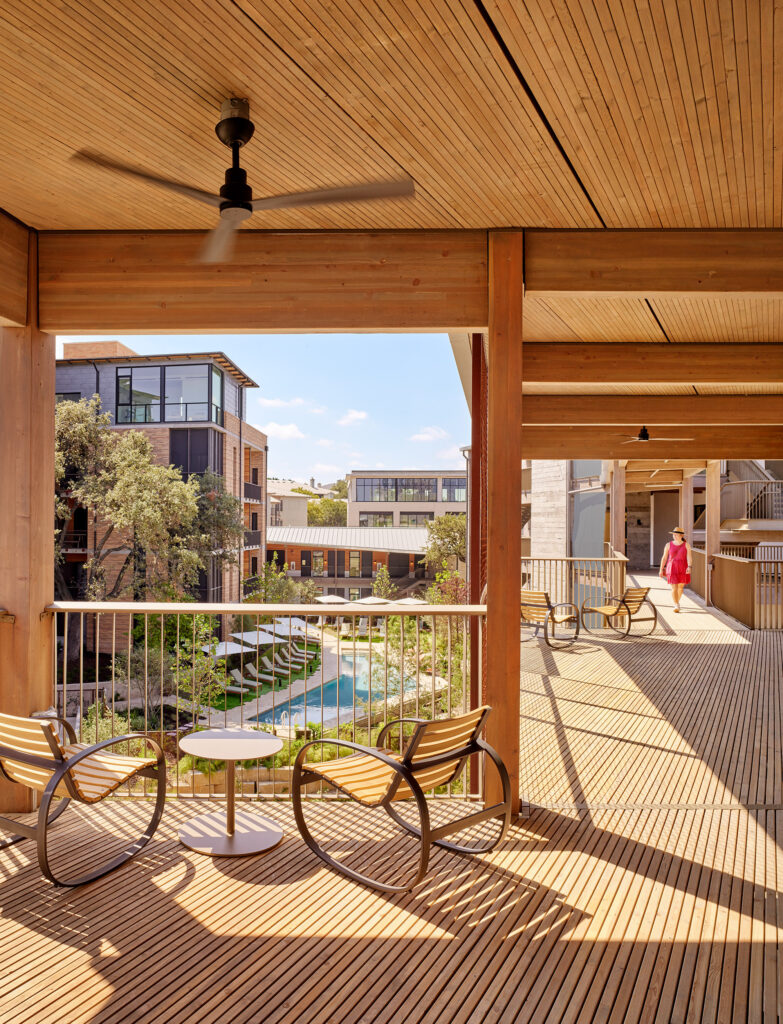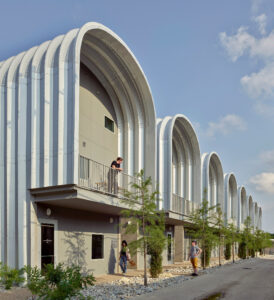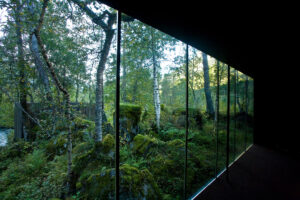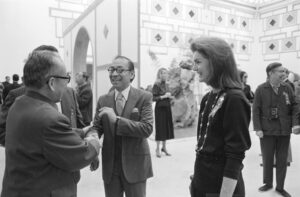
How Technological Feats Fuel Our Utopic Visions
Big Little Hotel: Small Hotels Designed by Architects
Donna Kacmar, FAIA
Routledge, 2023
There is a terrific nostalgia in recalling the humid, chlorinated air of an indoor swimming pool from a childhood family vacation. Years later, it may still arouse feelings of excitement, anxiety, or adventure, a sensory bookmark deeply informed by the experience of a transitory time and place.
That deep, emotional potency, as described by Donna Kacmar, FAIA, in the preface of Big Little Hotel: Small Hotels Designed by Architects, is an ephemeral trait that helps make hospitality architecture a uniquely compelling typology of building.
The book, taut and well-researched, charts the rise and evolution of hotels in the United States as a catalyst for social and technological change, as well as a response to shifting economic dynamics driven by an emergent middle class that created demand for new methods of accommodation.

Of particular focus is a sensitivity to projects that respond directly to their unique locale and an emphasis on projects with smaller footprints in general. That approach builds upon Kacmar’s previous book, Big Little House: Small Houses Designed by Architects, published in 2015, also by Routledge, which looked at how residential architects approached issues of material, light, space, and enclosure at scales of efficiency.
In its first pages, Big Little Hotel aims to establish a historical context that serves to place today’s contemporary works within the complex and overlapping churn of centuries of societal progress. Kacmar opens the section by quoting an essay by Julian Pitt-Rivers framing the concept of hospitality as “the problem of how to deal with strangers.”
Fundamentally, the architecture of hotels exists in service to the reciprocal rituals of hosting and being someone’s guest. That trust-based relationship transcends variances in time period, culture, geography, technology, and economy, yet the confluence of these elements often reveals much about the priorities of those offering and receiving accommodation. In this way, hospitality architecture can be perceived as a mirror of society itself.
Kacmar’s exploration goes beyond the aesthetic and functional aspects of buildings; she investigates the philosophical underpinnings of the typology as a whole, discussing how hotels have historically acted as microcosms of technological advancement and social change—from the advent of electricity, elevators, telephones, the personal automobile, and air conditioning to the rise of digital connectivity and sustainability. The book posits that hotels are not just passive structures but active participants in shaping both cultural narratives and economic landscapes.
Kacmar’s research is presented with clear, measured prose and complemented by commentary on current trends influencing boutique hotel design today. She addresses the growing demand for individualized experiences, the impact of globalization on local identities, and the increasing importance of sustainable practices.
Additionally, she explores the uncertain future of the industry, as global corporate consolidation further removes the guest from his or her relationship to a host at a time when app-based direct rental services, such as Airbnb and Vrbo, seek to reestablish that perception of intimacy under new service models.
Through these discussions, the book invites architects and designers to consider how their work can contribute to a more thoughtful and interconnected world, while simultaneously opening that world to architecture and travel enthusiasts at large through a curated collection of 19 contemporary case studies, presented via indulgent, image-heavy spreads and featuring the work of the country’s top architects and architectural photographers.
The case studies, which comprise the majority of the publication’s page volume, offer more than a cursory glance at many artful interior spaces. Through a varied project selection that spans both coasts, the Midwest, and the South, Kacmar summarizes the architecture through the lens of the owners and architects who brought each project to fruition. Novel details are not simply called out; they are helpfully contextualized by the book’s emphasis on the history of hospitality, presented up front.
Two projects in Texas are featured, both well known and located in Austin.

Hotel Magdalena, by Lake|Flato Architects, leads the section of case studies and is distinguished by its embrace of mass timber construction—one of the first hotels in North America to do so. The design pays homage to Austin’s lakeside culture of the ’70s, blending indoor and outdoor spaces with open-air walkways, lush courtyards, and abundant natural light.

The Carpenter Hotel, designed by Specht Architects, is celebrated for its adaptive reuse of a 1940s carpenters’ union hall, cleverly retaining much of the original building’s industrial character through expression of exposed concrete, raw wood, and locally sourced terra cotta masonry from D’Hanis, Texas. Set amidst mature pecan trees, the hotel unites a minimalist indoor aesthetic with verdant outdoor spaces, exemplifying sustainable urban development in Austin.
Taken as a whole, the book succeeds in presenting an array of complex themes that feel accessible to both architects and enthusiasts alike, avoiding the trap of oversimplification while maintaining an abundance of generous, well-curated photography and drawings.


How Technological Feats Fuel Our Utopic Visions

An Ambitious Office Tower Redefines Urban Sustainability

Exploring the Perils and Delights of Houston’s Irreverent Approach to Urban Development

A Family’s Legacy of Excellence

How Can Utopic Ideals Be Engaged in Everyday Life?

Picture-Perfect Charm Along the Texas Gulf Coast

PS1200 Builds a Backdrop for Public Life

Exploring the Parallels Between Science Fiction and Architecture








Illuminated Wood Panels, Inserts for Brick Walls, and Fixtures Made from Recycled Plastic, Mycelium, and Hemp

Home, Heat, Money, God: Texas and Modern Architecture
Text by Kathryn E. O’Rourke
Photographs by Ben Koush
University of Texas Press, 2024

I. M. Pei: Life Is Architecture
M+ Museum, Hong Kong
